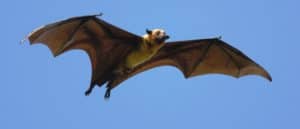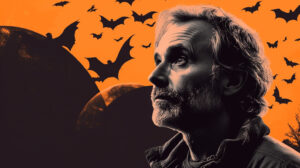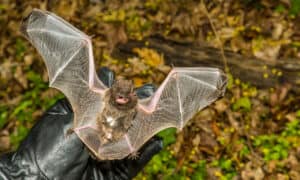There are more than 1,300 bat species globally, 47 in the United States, and at least 30 in Texas. The state has over 3,000 caves, and many of them bring visitors worldwide to view these spectacular flying mammals. The largest bat colony in Texas is in Austin at the Ann W. Richards Congress Avenue Bridge, where you can watch 1.5 million bats take flight every night. Discover the most common 20 bats in Texas and pursue a new hobby in bat watching.
Mexican Long-Tongued Bat
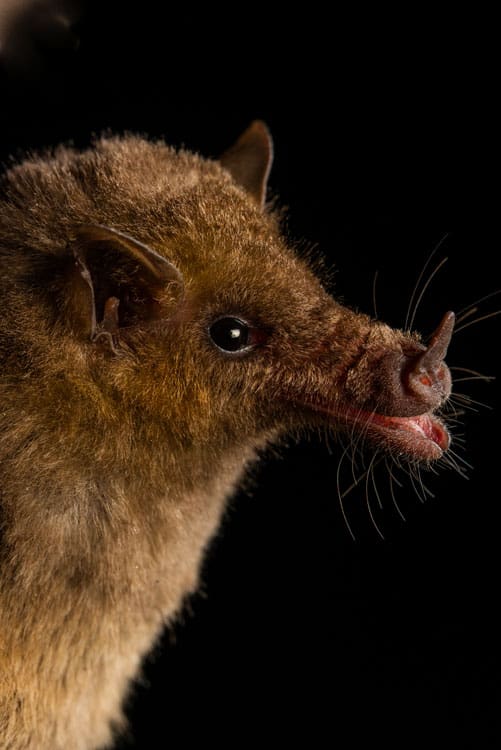
The Mexican long-tongued bat is in the southern tip of Texas and uses its long tongue to drink nectar.
©svaldvard/Shutterstock.com
The Mexican long-tonged bat, or MLTB, is found in the southwestern United States and from Mexico to Honduras. It’s only about three inches long and brown or gray in color with a short tail. Its distinguishing feature is its long, narrow, extendable tongue, which it uses to feed on nectar. This species helps pollinate agave plants used to make tequila.
Mexican Long-Nosed Bat
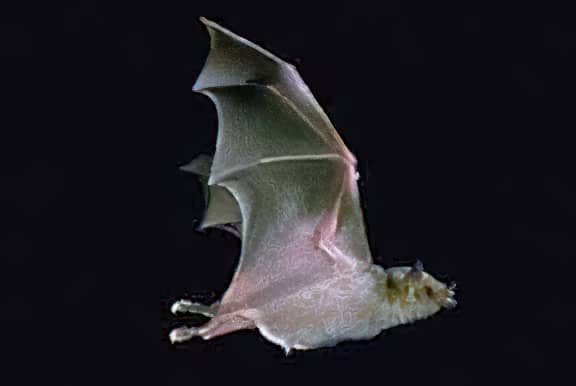
From the southern tip of Texas and Central Mexico, the Mexican long-nosed bat is grayish-brown and has a short tail.
©Joelr31~commonswiki / public domain – License
Like its long-tongued cousin, the Mexican long-nosed bat is from the southern tip of Texas and Central Mexico. They are grayish-brown with short tails, elongated muzzles, and long tongues. Both species have extended tongues that allow them to dip into flowers and feed from their nectar. The long-nosed bat is also a nectarivore and is a pollinator of night-blooming cacti.
Ghost-Faced Bat
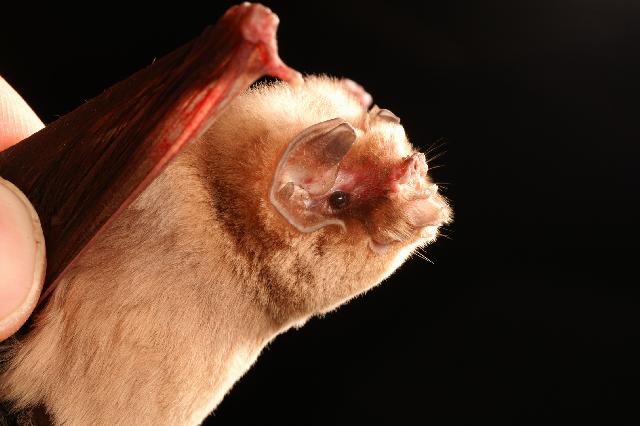
Found near the Trans-Pecos region, the South Texas Plains, and near Edward’s Plateau, the ghost-faced bat prefers
desert
scrub and mixed tropical forest habitats.
©Alex Borisenko, Biodiversity Institute of Ontario / CC BY-SA 3.0 – License
This reddish-brown bat is medium-sized and gets its name from its unusual-looking face. Its rounded ears rest on top of its forehead, making its eyes appear small and weirdly placed. It also has skin flaps protruding from its chin. This species resides in the Trans-Pecos region, South Texas Plains, and near the Edward’s Plateau. Its preferred habitats include desert scrub and mixed tropical forests.
Eastern Red Bat
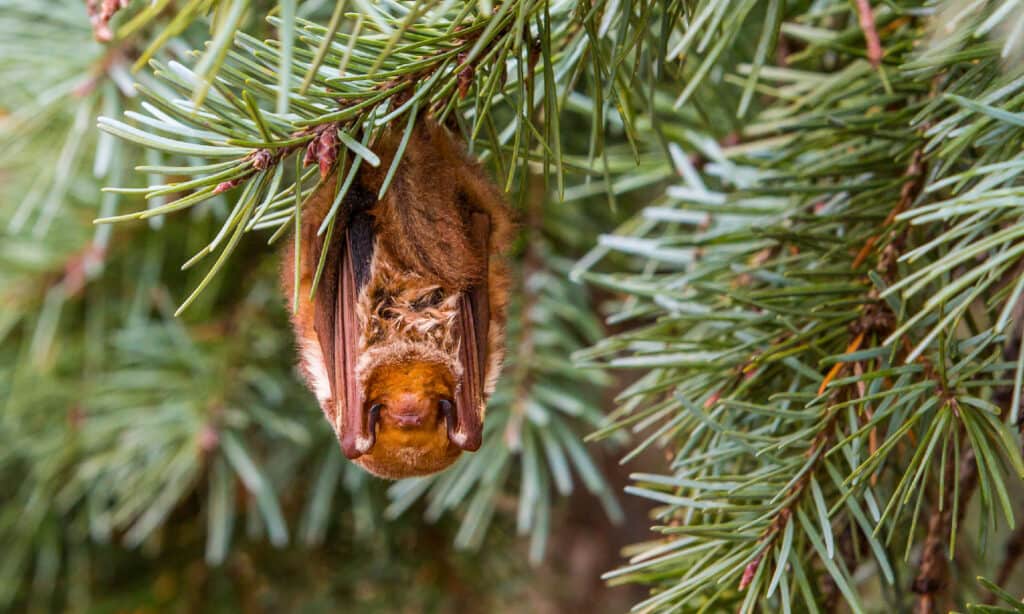
The Eastern red bat inhabits forested areas in Western Texas.
©Elliotte Rusty Harold/Shutterstock.com
The eastern red bat is a furry, rusty-red microbat that weighs less than half an ounce. This species has an extensive distribution across the United States and lives in many habitats. It is migratory and will move further south during a cold front; you can find them in Western Texas, where they prefer forested environments.
Big Free-Tailed Bat
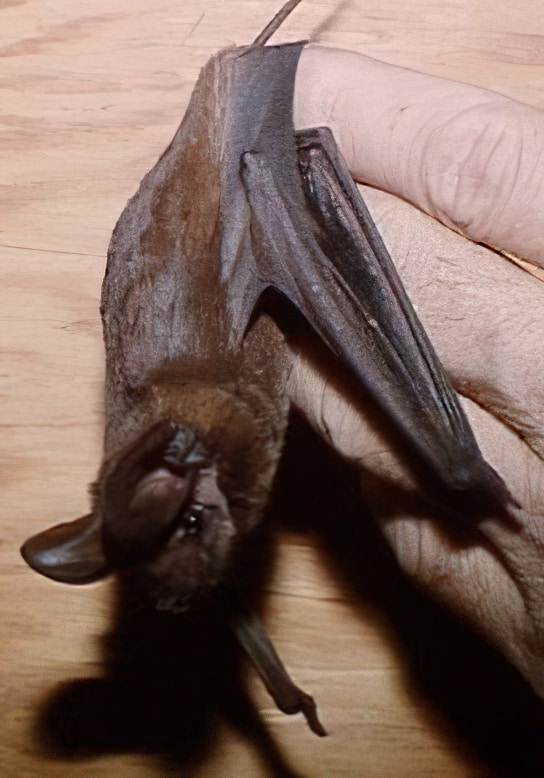
Inhabiting rocky areas in western Texas is the big free-tailed bat.
©Grand Staircase-Esclanate National Monument, Bureau of Land Management / M.Siders / public domain – License
The big free-tailed bat is migratory and inhabits rocky areas in arid landscapes in West Texas. They mainly roost inside rock crevices, which they use long-term. You can find this species in North, South, and Central America, as well as the Caribbean. It has dark brown glossy fur with rapid flight speeds that exceed 25 miles per hour.
Hoary Bat
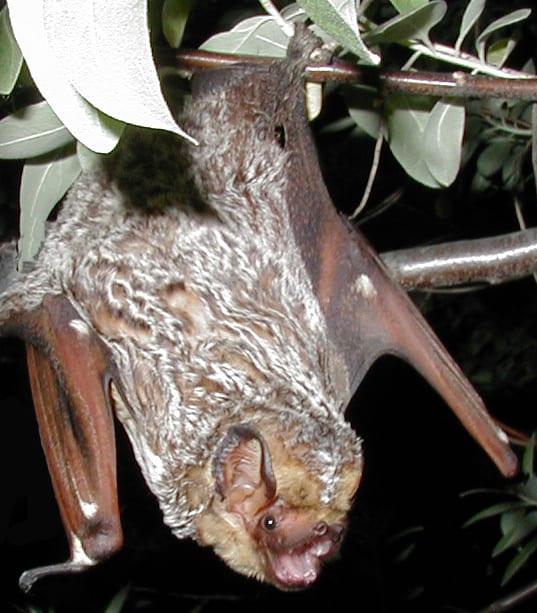
A solitary bat found throughout Texas, hoary bats prefer arid deserts.
©Photographer: Paul Cryan, U.S. Geological Survey / public domain – License
The hoary bat has one of the most widespread distributions across the United States. It is a large and distinctively marked bat with dark brown fur and white and light brown bands. This solitary mammal is migratory and found throughout Texas, where it prefers to inhabit arid desert environments. It’s also insectivorous, meaning it eats flies, beetles, and grasshoppers.
Cave Myotis
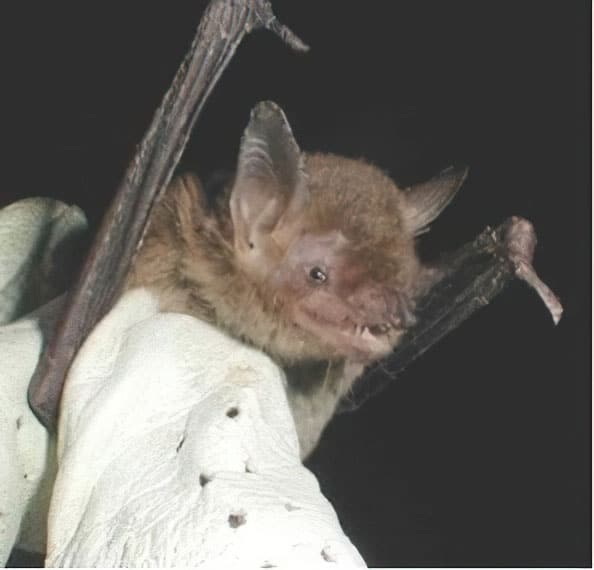
The cave myotis is found in the southwestern United States, but also in parts of Mexico and Honduras.
©NPS / public domain – License
These brown and black bats have a hairless area between their shoulder blades. The cave myotis lives in the southwestern United States and parts of Mexico and Honduras. As its name suggests, it prefers to dwell in caves but may also roost in mines, bridges, and buildings. In Texas, these bats occupy the High Plains, Rolling Plains, Trans-Pecos region, Edwards Plateau, and South Texas Plains. They are migratory; you can view them in the state during summer.
Southern Yellow Bat
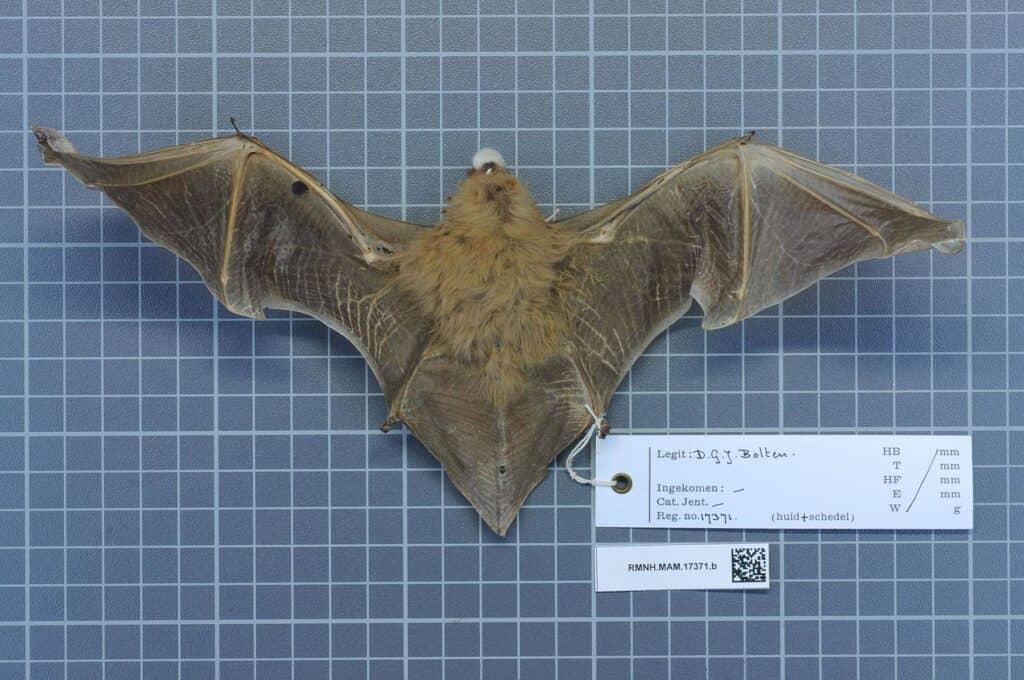
The Southern yellow bat lives in Southern Texas year-round, roosting under palm fronds.
©Naturalis Biodiversity Center / CC0 1.0 – License
The southern yellow bat is medium-sized with dull yellow fur. It is a sub-tropical species that occupies South Texas year-round, roosting under dead palm tree fronds. The only way to distinguish between Northern and Southern yellow bats is to look at their size; their northern relative is slightly bigger. You can find the Southern species on the Southern Texas Plains and Gulf Coastal Plains.
Rafinesque’s Big-Eared Bat
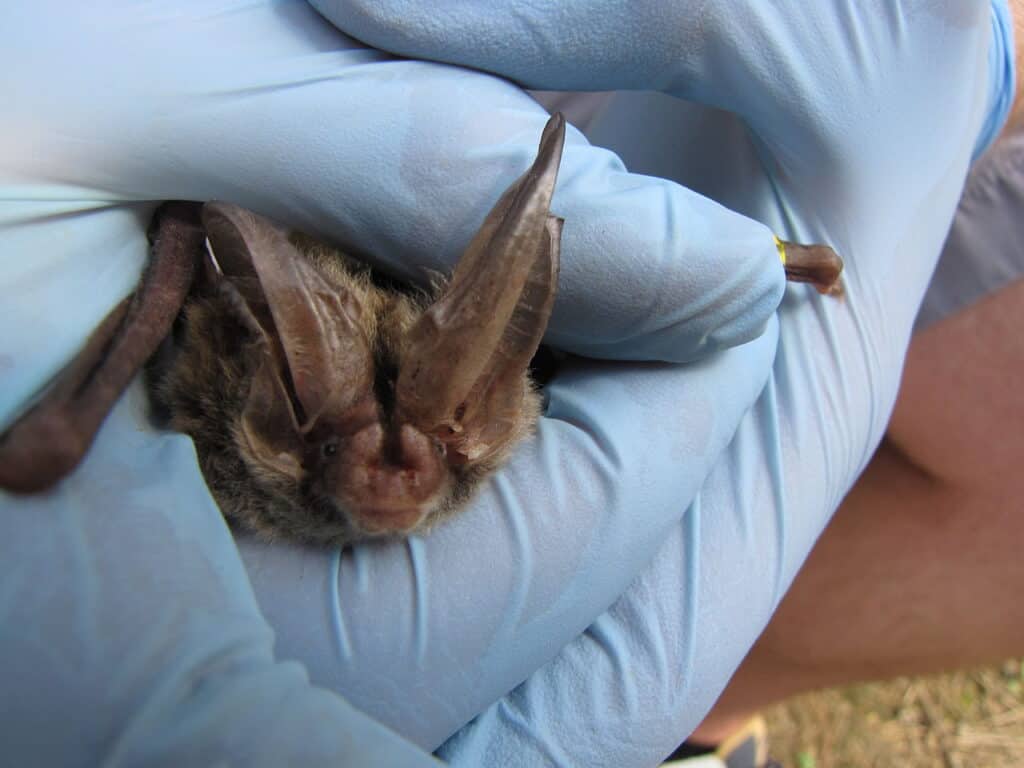
A wingspan of 10 to 12 inches is just one unique physical feature of Rafinesque’s big-eared bat.
©CSJordan / CC BY 3.0 – License
This rare species is a medium-sized bat with long rabbit-like ears and facial glands protruding from each side of its snout. Its wingspan is 10 to 12 inches, and they fly in the dark of night, eating pests like mosquitos and other insects. Moths are their favorite meal, and they roost in cave entrances or under bridges near forests. You can view them along the Gulf Coast or in the pine forests of East Texas.
Evening Bat

Evening bats live in tree crevices in the forests of eastern Texas.
©NPGallery / CC0 – License
This small bat lives in East Texas, dwelling in tree crevices in forests. The evening bat is similar in appearance to the big brown bat, except it’s smaller. This small bat lives in eastern Texas, dwelling in tree crevices in forests. It eats a variety of insects, with beetles being its favorite. These beneficial consumers act as natural pest control and coexist well with humans.
American Parastrelle
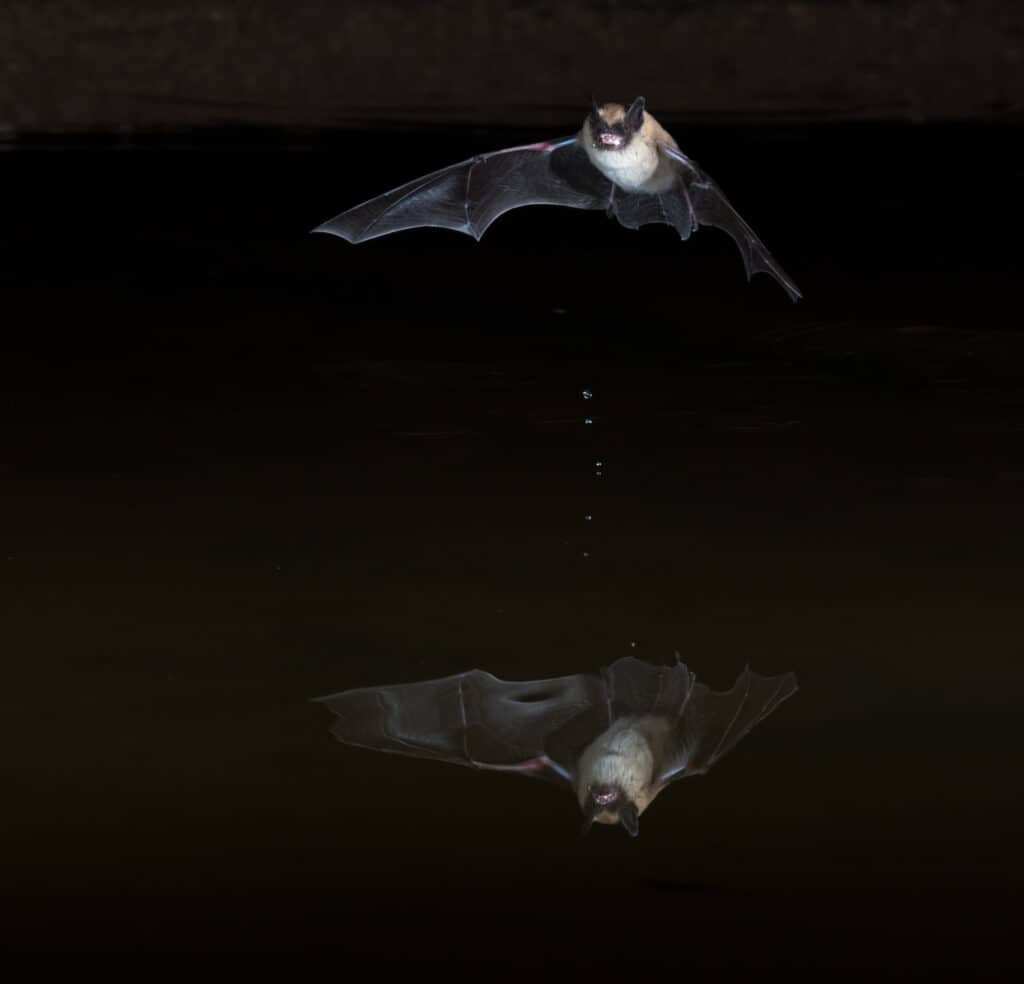
The American Parastrelle, a.k.a. canyon bat, used to belong to the genus
Pipistrellus.©Dee Carpenter Originals/Shutterstock.com
The American Parastrelle is one of the most common bat species in the southwestern desert and mountain and canyon areas in the Trans-Pecos region. They prefer to roost in small rock crevices in canyon landscapes. They are the smallest North American bat species and are typically the first to leave their roost in the evening. When it was part of the Pipistrellus genus, this bat was known as the western pipistrelle. With a lack of evidence that it scientifically belongs in Pipistrellus, scientists have since assigned it its own genus.
Big Brown Bat

Big brown bats live in deciduous forests in East and West Texas.
©Jay Ondreicka/Shutterstock.com
This species is large and robust, with a broad nose and varying shades of brown fur. The big brown bat thrives in many environments and ranges extensively from Alaska down to South America. It prefers to live in deciduous forests but takes to roosting in buildings where it can. Texas has two species of big brown bats occupying East and West Texas.
Western Red Bat

Enjoying trees near streams, western red bats can only be found on the western tip of the Trans-Pecos region.
©United States National Park Service / public domain – License
The western red bat is easily distinguishable from other North American bats due to its distinctive red coloring. This species has a wide geographic range, from Canada down to South America. However, it only inhabits a small area on the western tip of the Trans-Pecos. They roost under leaves in the forest and like to be in trees near streams.
Silver-Haired Bat

While abundant in the United States and Canada, the silver-haired bat migrates to areas of Texas from fall through spring.
©Jay Ondreicka/Shutterstock.com
This bat is abundant in forested areas in the United States and Canada and relies on old-growth forests for plenty of rooting space. It is of medium size with black hair and white tips. They migrate to milder climates during winter. This species inhabits most areas of Texas and migrates there fall through spring.
Yuma Myotis

While they thrive in many habitats, the Yuma myotis is associated with permanent water sources.
©Daniel Neal from Sacramento, CA, US / CC BY 2.0 – License
The Yuma myotis has short-brown fur with a white underbelly. They are typically associated with permanent water sources like streams and rivers. They have a significant range and thrive in many habitats like deserts, forests, and scrublands. Their roosting preferences are diverse and utilize caves, buildings, bridges, mines, trees, and crevices. You will likely find them in the Rocky Mountains in East and West Texas.
Mexican Free-Tailed Bat
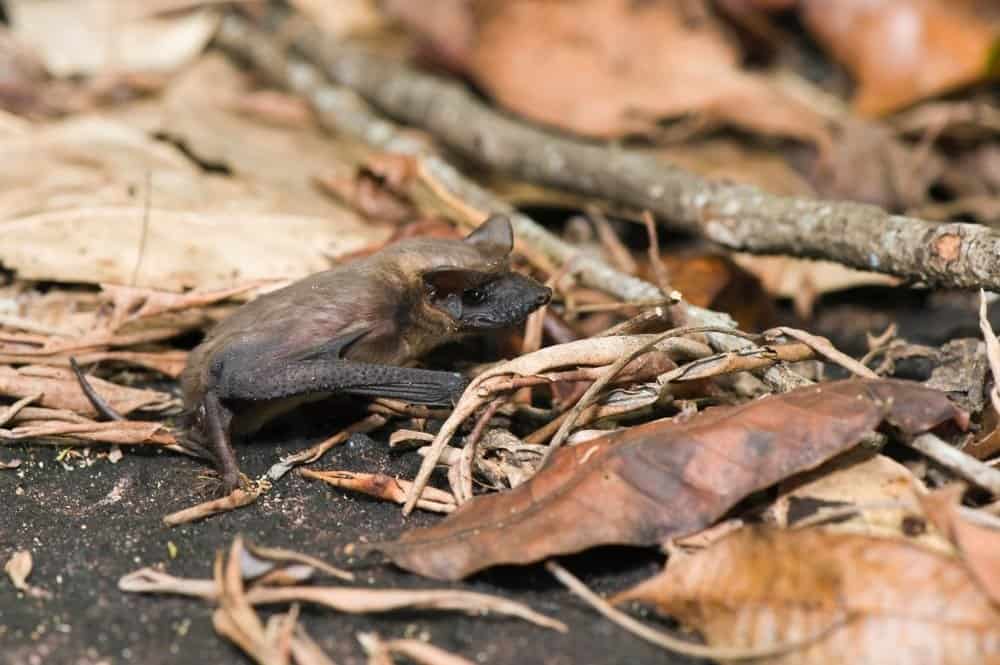
The Mexican free-tailed bat is the most common bat in Texas.
©GTW/Shutterstock.com
Head to Austin, Texas, to see over 1.5 million Mexican free-tailed bats take flight. Bracken Cave in San Antonio is also home to the world’s largest colony of this species. This medium-sized bat is native to the Americas and is considered one of the most abundant mammals in North America. The Mexican free-tailed bat is the most common bat in Texas.
Long-Legged Myotis
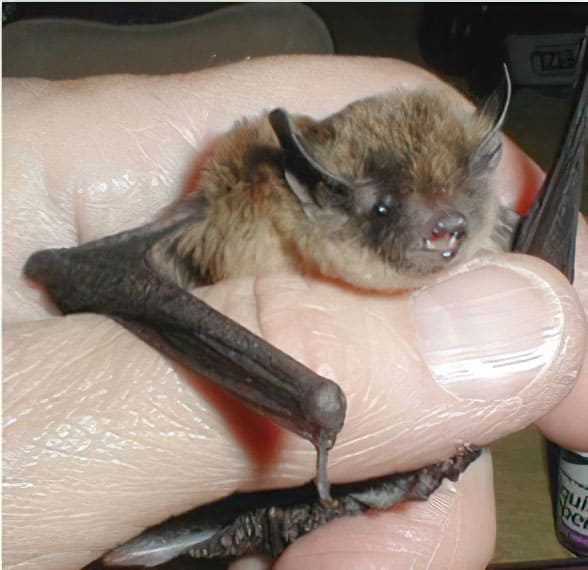
Living up to 21 years in the wild, the long-legged myotis has a long life span for a bat.
©NPS / public domain – License
This rare species mainly occupies the Trans-Pecos region in Texas. It has short, round ears, brown fur, long legs, and tiny hind feet. The long-legged myotis has an incredible life span for a bat, at 21 years in the wild. This unique bat will roost in many places, including abandoned buildings, cracks in the ground, cliff crevices, and tree bark. Most of its diet consists of moths but will also dine on other insects.
Northern Yellow Bat
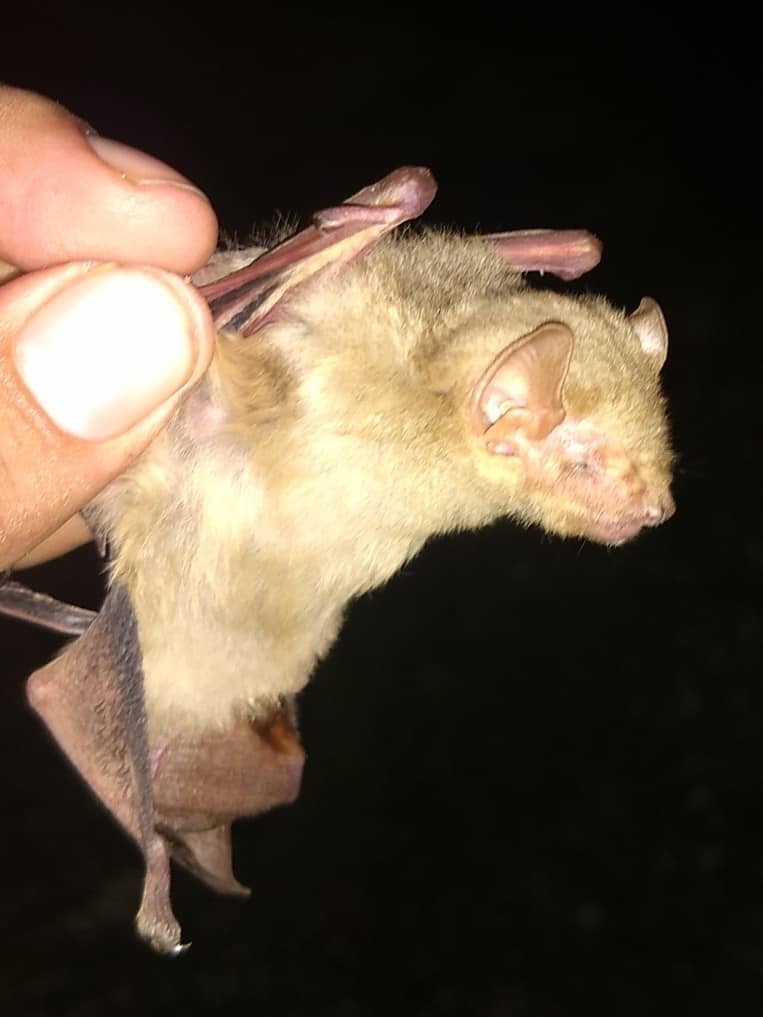
Preferring to roost in a single tree, northern yellow bats can be found close to the coast, where they conceal themselves under palm fronds.
©Juan Cruzado Cortés / CC BY-SA 4.0 – License
The northern yellow bat has long yellowish-orange fur and can grow up to five inches in length with a wingspan of 14 to 16 inches. This bat is non-migratory, and you can find it in the eastern and southern parts of Texas, where it prefers to roost in a single tree or group of trees. They may be closer to the coast, where they can conceal themselves under palm fronds.
Pallid Bat
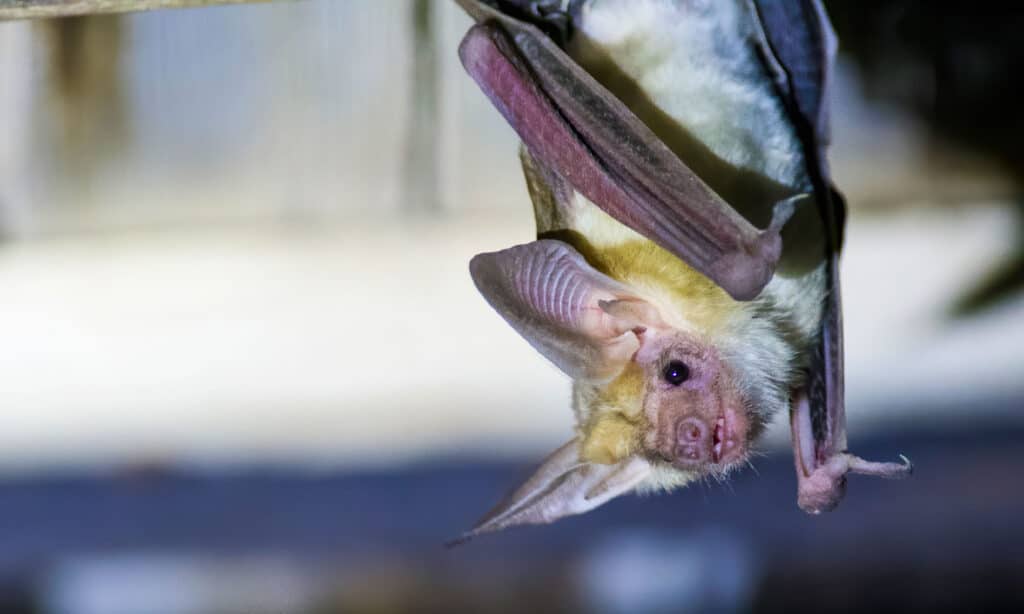
With glands that resemble warts, pallid bats produce an odor similar to a
skunk
.
©Amanda Guercio/Shutterstock.com
Pallid bats, or desert bats, reside in many Texas areas, including the Panhandle, West, South, and Central Texas. These unusual bats have a creamy yellow color with glands that resemble warts and produce an odor similar to a skunk’s. These bats are gregarious, often roosting in groups of twenty or more, preferring the security of rock crevices, caves, and mines.
Seminole Bat
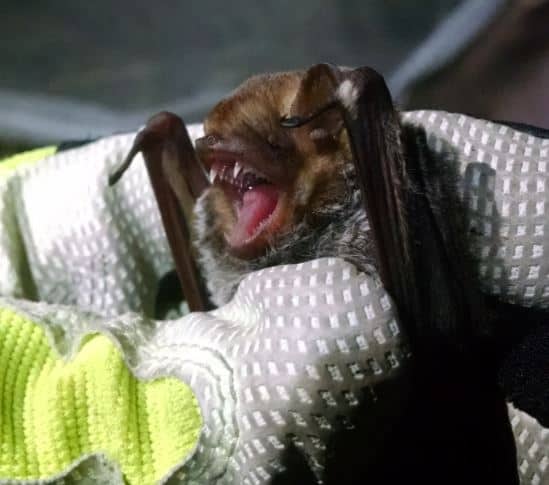
With a preference for solitary roosting, Seminole bats spend most of their days in lowland areas.
©Enwebb / CC BY-SA 4.0 – License
The Seminole bat has a deep mahogany color with frosted tips, a furred tail membrane, short ears, and a wingspan of 11 to 13 inches. It spends most of its days in mixed forests or lowland areas like river swamps. They also prefer to roost alone and have a varied diet of insects, occupying forest regions from East to Central Texas.
The photo featured at the top of this post is © Rudmer Zwerver/Shutterstock.com
Sources
- Texas Parks & Wildlife, Available here: https://tpwd.texas.gov/huntwild/wild/species/bats/bat-watching-sites/
- Bat Conservation International, Available here: https://www.batcon.org/see-bats-live/visit-bracken-cave-preserve/
- Texas Parks & Wildlife, Available here: https://tpwd.texas.gov/huntwild/wild/species/bats/bat-watching-sites/bracken-cave-preserve.phtml
- West Texas Bat Group, Available here: https://westtexasbats.org/species/american-parastrelle/
FAQs (Frequently Asked Questions)
Where is the largest bat colony in Texas?
The largest bat colony in Texas is Bracken Cave. Bracken Cave is located outside of San Antonio, in Comal County. Over 20,000,000 Mexican free-tailed bats arrive at this cave every year, around March and April. Flying up to 1,000 miles to reach this cave, migrant mothers give birth to their babies here.
What state has the largest bat population in the United States
Texas does, in fact! Texas is home to 32 bat species, of the 47 species that can be found in the U.S.
Thank you for reading! Have some feedback for us? Contact the AZ Animals editorial team.



